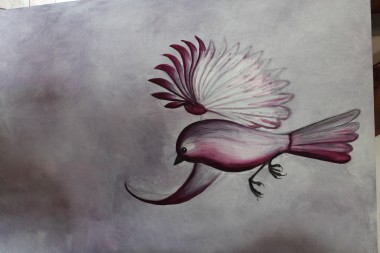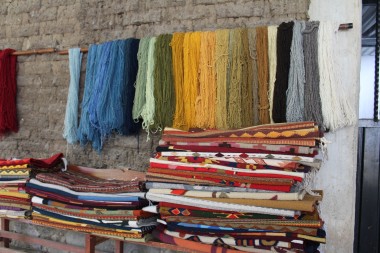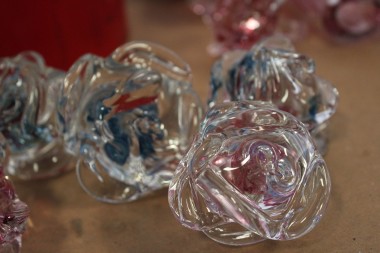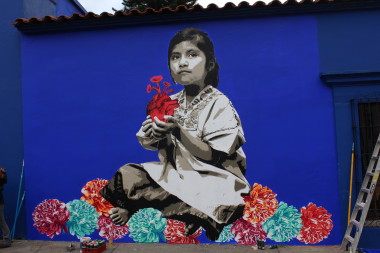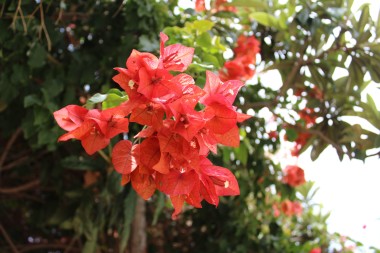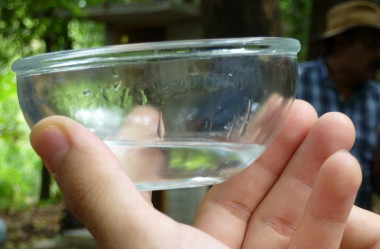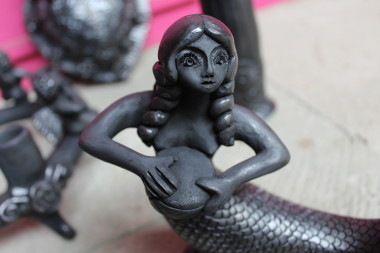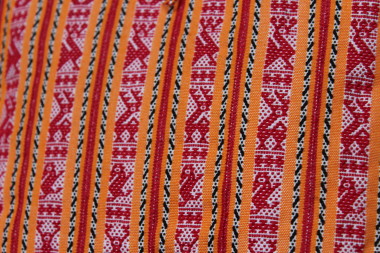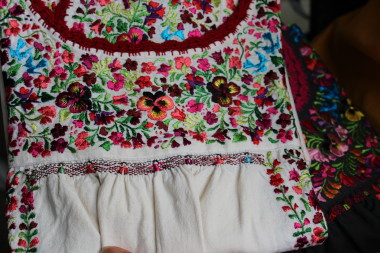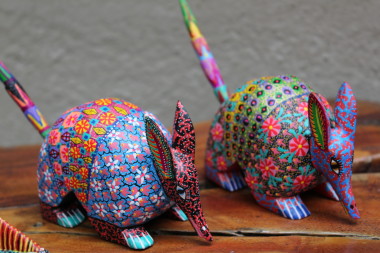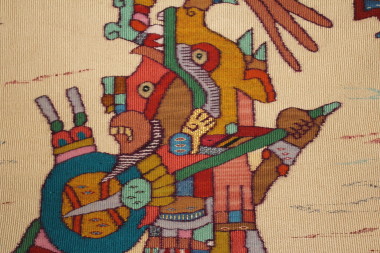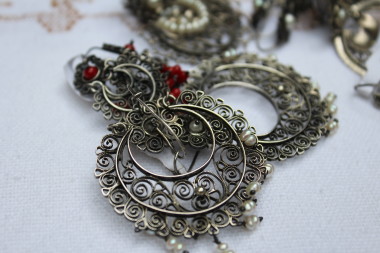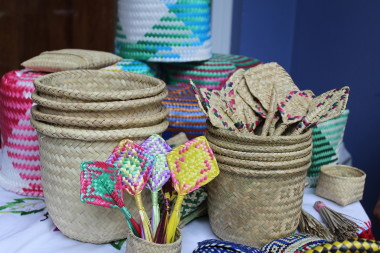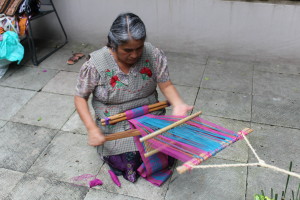
Crispina weaves a variety of vibrant products: stacks of colorful satchels, detailed belts, lengthy table runners, giant table cloths, and more. Each has a unique design with a variety of colors, from toned down darker shades to the bright colors of Oaxacan flora. She notes the different colors in all of her work and the importance of how they are not all the same. To make the rainbow of colors, Crispina uses a natural tint and nothing more than this. Much of her education on her artwork was spent on obtaining this knowledge for colors.
When Crispina was taught about colors, she was explicitly told not to combine colors and that they had to be kept separate and vibrant, but for her art, it works well to either keep them separate or combined. In addition to colors, Crispina uses natural material. It may look like a softer wool, but it is actually cotton. Crispina states that she really likes this material not only because it is beautiful but also because it weaves well into her work. From these colors and material come intricate designs that preserve the past. Crispina always envisions what her work will look like as a final product before a piece begins. Her designs are endless: flowers, stars, a woman, a giant, iguanas, and more than can be listed here! There is no pattern or writing to follow for the artwork. Once learned, Crispina remembers for the future. This helps when combining designs and putting them together in the way that one wants. As a result, some take exceptionally more time because of this.
To make her most intricate and difficult weaving work on tablecloths, Crispina wraps a rope around a tree with her work attached and puts a band on her waist. Most of her weaving is made by working from the waist. The time it takes to complete each piece varies. For example, a table runner or cloth can take two days if she works on it all day. As a result of such a variety of work, Crispina states that while her education taught her to base prices off of detail, time put in, materials used, and so forth, she personally bases it on beauty. Crispina states that her work is so much a part of her life and free time that it is not work to her. In fact, to be successful, Crispina feels that it needs to be integrated with her daily life!
She learned her weaving in her home, starting when she was just six years old. It was the work of her mother and family. Crispina remarks fondly that she still works with her mother and siblings in the house. In her town, it is traditional work, and she gladly teaches children if they want to learn too. It is easy for the children to learn since they are born into it. Crispina notes that it is not just her family or friends in the house, though, as many people come to visit. Why? Well, when she was just fifteen years old, she began to work with new fabrics and on new pieces. In 1981 to 1983, she participated in art contests for Oaxaca and won awards for her work. Because of this, the population began to learn more about her, visit her home, and ask for her work.
This is clearly for good reason. Crispina’s passion for her work shows beyond the beautiful pieces when she speaks about them. When asked if there is anything that makes her artwork unique, Crispina stated that beyond the amount of time put in, it took a lot of learning over time to obtain the skill to make unique pieces. Crispina smiled and simply said, “No one else can make these exact pieces the way we do.” Then, when asked to describe her work in one phrase or word, she stated proudly, “ ‘Magnificent,’ because I taught myself so much and I say it shows a life that is very dedicated to my art.”


